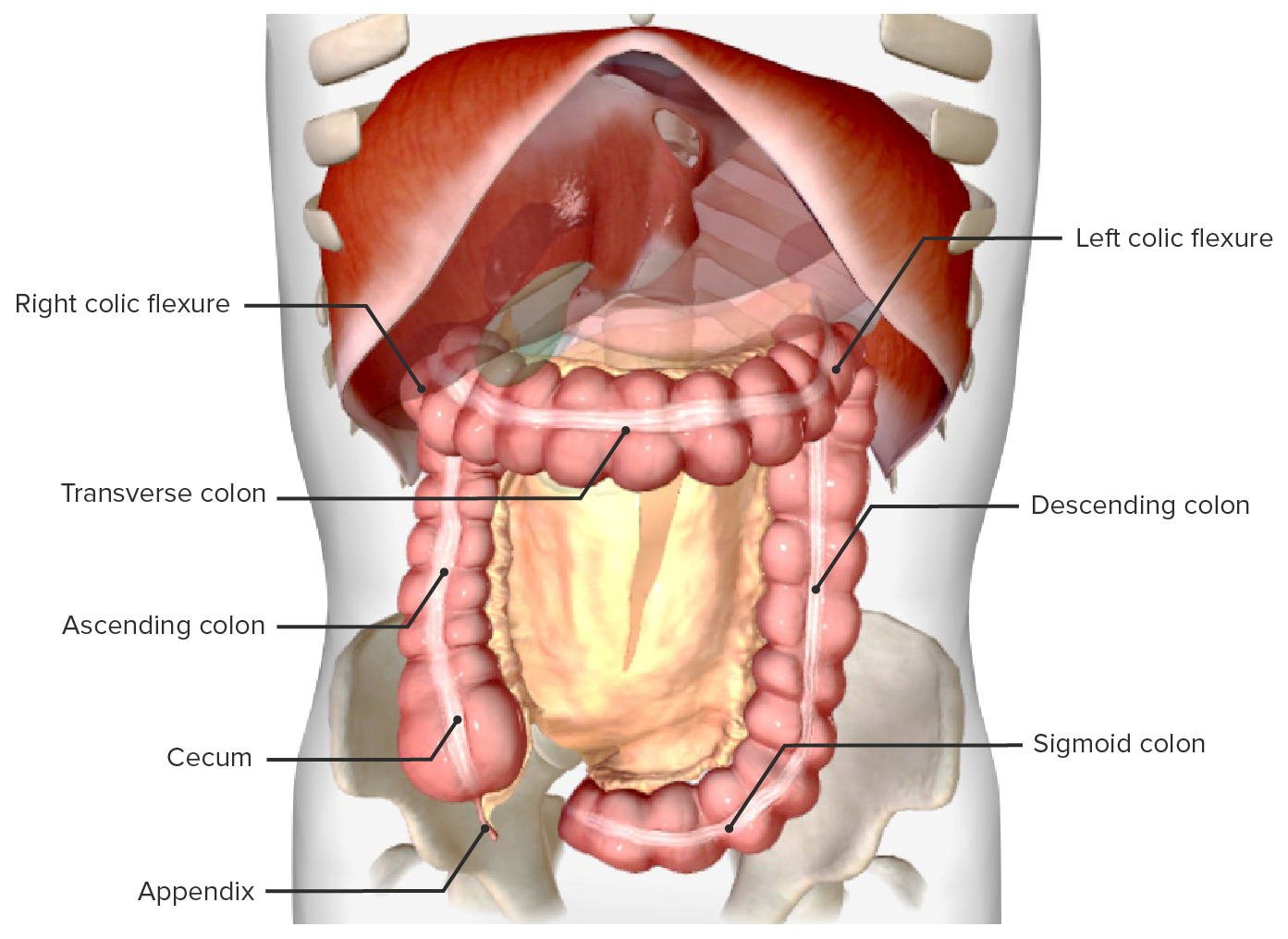Playlist
Show Playlist
Hide Playlist
Wall Structure of the Large Intestine
-
Slides Wall Structure of the Large Intestine.pdf
-
Download Lecture Overview
00:01 Let's just have a look at the whole structure in brief. And again there's a lot more detail in various histology courses that you should engage in. But just briefly as other parts of the GI tract, we have the basic structure of the mucosa, the submucosa, we have a muscular layer, we have both circular and longitudinal layer. Remember the longitudinal layer of muscle is only occurring at the teeny space and then the serosa which is really the outer layer of peritoneal covering. Let's just have a look at the mucosa because as ever there's going to be a layer of epithelium which is highly regenerated and it's quite an aggressive position on the outermost layer of the wall of the colon where food is actually just constantly kind of churning against the wall and that can lead to some of these cells leaving. In between each of these semilunar folds which we can see, we have these various colonic crypts and that's where the various enzymes and various products and the mucus that is released from the cells within the epithelium, that's where these are discharged into those crypts and then they can enter into the lumen. We have the lamina propria which is obviously the important aspect where we have lots of solitary kind of lymphoid nodules and also various small blood vessels passing into the spaces so they will be occupying this space here. You then have the muscularis mucosa occupying a lot of those blood vessels that are running alongside the wall of the large intestine.
About the Lecture
The lecture Wall Structure of the Large Intestine by James Pickering, PhD is from the course Anatomy of the Large Intestine.
Included Quiz Questions
Which statement regarding the large intestine is inaccurate?
- The walls are thick compared with the small intestine.
- The walls are thin compared with the small intestine.
- Villi and microvilli are absent.
- Its function is to transmit feces.
- It helps in the absorption of water and vitamins.
Which cells are present in the glands of the large intestine?
- Goblet cells
- Parietal cells
- Chief cells
- Enterochromaffin-like cells
- Alpha cells
Customer reviews
5,0 of 5 stars
| 5 Stars |
|
5 |
| 4 Stars |
|
0 |
| 3 Stars |
|
0 |
| 2 Stars |
|
0 |
| 1 Star |
|
0 |




